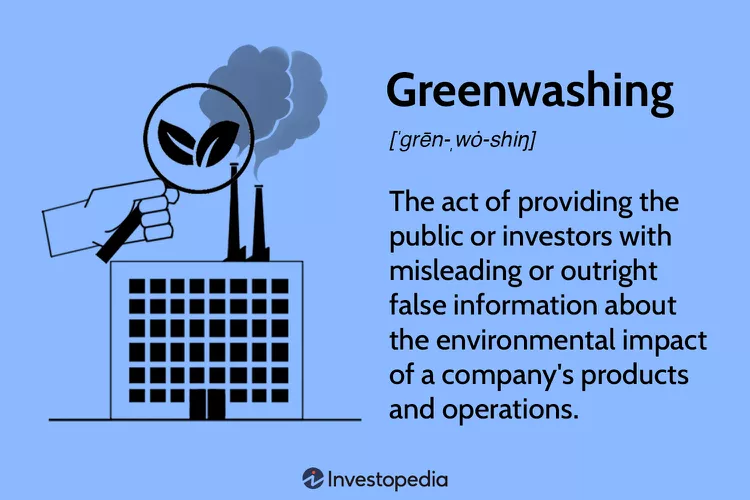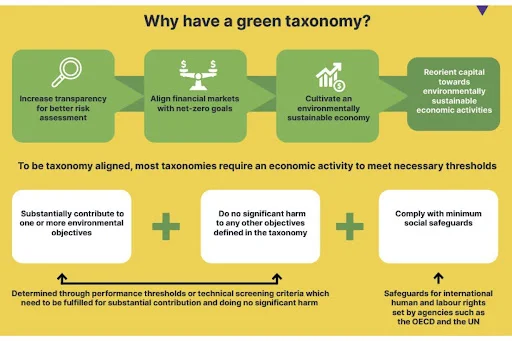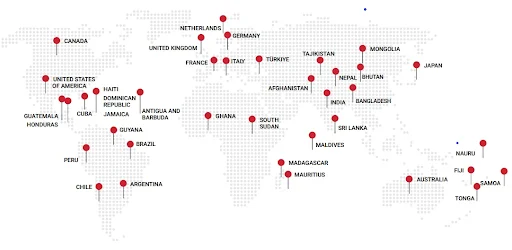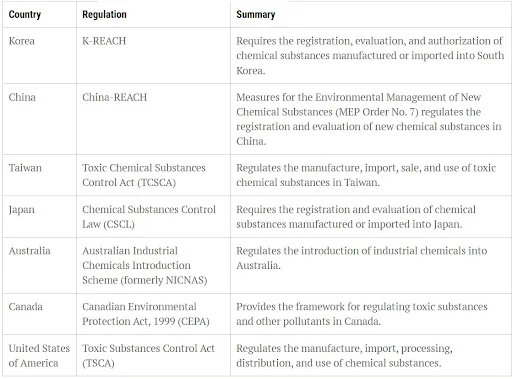GS Paper 2
Financial Intelligence Unit (FIU)
- News: India’s FIU has issued alert indicators for capital markets, insurance, online payments, and cryptocurrency services, strengthening anti-money laundering and counter-terrorism financing measures.
- Reporting Structure:
- It was instituted by the Government of India in 2004.
- FIU operates autonomously under the Economic Intelligence Council (EIC) chaired by the Finance Minister, ensuring direct oversight.
- Core Responsibilities:
- It serves as the nation’s pivotal agency for receiving, processing, analyzing, and disseminating information pertaining to suspicious financial transactions.
- FIU synchronizes national and international intelligence, investigation, and enforcement efforts to combat money laundering and terrorism financing.
- It fosters collaboration among stakeholders to fortify global initiatives aimed at addressing these pervasive threats.
- Multidisciplinary Composition:
- FIU’s multidisciplinary composition includes representatives from governmental bodies like CBDT, CBEC, RBI, SEBI, the Department of Legal Affairs, and intelligence agencies, facilitating a comprehensive approach to its operations.
National Centre for Good Governance (NCGG)
- News: Department of Administrative Reforms and Public Grievances (DARPG) delegation has visited Bangladesh for renewal of MoU between National Centre for Good Governance (NCGG) and Bangladesh Ministry of Public administration.
- About NCGG:
- NCGG stands as an apex-level autonomous institution operating under the Ministry of Personnel, Public Grievances, and Pensions.
- Establishment and Origin:
- The Centre traces its origin to the National Institute of Administrative Research (NIAR).
- NIAR was set up in 1995 by the Lal Bahadur Shastri National Academy of Administration (LBSNAA), the Government of India’s topmost training institute for civil services.
- NIAR was subsequently rechristened and subsumed into NCGG.
- Objectives: The Centre encompasses a broad spectrum of objectives, including:
- Serving as a national repository of information regarding best practices and initiatives promoting Good Governance and e-Governance.
- Advising on crucial governance issues and fostering synergy among various Ministries/Departments of the Government of India and State Governments.
- Engaging in the provision of consultancy services domestically and internationally.
- Mandate:
- The mandate of NCGG spans governance, policy reforms, capacity building, and training for civil servants and technocrats in India and other developing nations.
- Governing Body:
- The affairs of NCGG are overseen by the Governing Body, led by the Cabinet Secretary.
- This body comprises Secretaries of nine ministries/departments and five eminent individuals, including academicians, administrators, specialists, innovators, and heads of reputable institutions.
- The Director General, serving as the Chief Executive of NCGG, also acts as the Member-Secretary of the Governing Body.
- Head Office: New Delhi and branch office at Mussoorie.
Target Olympic Podium Scheme (TOPS)
- News: Former world number one archer Deepika Kumari, who won a silver medal at the World Cup in Shanghai, has been re-inducted into the Target Olympic Podium Scheme (TOPS).
- Definition: It was launched in 2014 by the Union Ministry of Youth Affairs and Sports.
- Aim: Target Olympic Podium Scheme (TOPS) aims to elevate India’s performance at the Olympics and Paralympics.
- Funding Sources: TOPS receives funding from the National Sports Development Fund (NSDF) and the Khelo India scheme, ensuring financial support for its endeavors.
- Support Services Provided: TOPS offers comprehensive support to athletes, including:
-
- Financial assistance for training and competition.
- Access to foreign coaches and training facilities.
- Support staff such as physiotherapists, sports psychologists, and nutritionists.
- Provision of the latest equipment and infrastructure.
-
- Benefits of TOPS:
-
- Enhanced training opportunities for athletes.
- Improved medal prospects for India at major sporting events.
- Recognition and motivation for aspiring athletes.
-
- Financial Assistance: Each athlete receives a monthly stipend of Rs. 50,000, ensuring financial stability and support throughout their training and preparation.
GS Paper 3
Green Taxonomy
- News: The RBI’s latest Monetary Policy Report prioritizes climate shocks’ impact on financial stability, signaling its alignment with ASEAN’s green taxonomy.
- Understanding Green Taxonomy:
- A green taxonomy serves as a classification system defining environmentally sustainable economic activities and assets, establishing a standardized framework within the financial sector.
- Objectives:
- It focuses on key environmental objectives such as climate change mitigation and adaptation.
- It may extend to include biodiversity conservation, often incorporating “do no significant harm” criteria to mitigate adverse impacts on other environmental domains.
- It may incorporate social safeguards like compliance with human rights standards.
- Benefits of Green Taxonomy:
- Combatting Greenwashing: By providing a clear definition of what constitute environmentally sustainable practices, it helps prevent companies from engaging in greenwashing, thus ensuring transparency and accountability.

- Empowering Investment Decisions: Equips investors with the necessary tools to discern genuinely sustainable investment opportunities, facilitating informed decision-making and fostering a transition towards a greener economy.
- RBI and Green Taxonomy: The RBI’s latest Monetary Policy Report prioritizes climate shocks’ impact on financial stability, signaling its alignment with ASEAN’s green taxonomy.
- Learning from ASEAN’s Approach:
- Both the RBI and Finance Ministry can draw insights from the ASEAN region’s adoption of a dynamic green taxonomy.
- For example, launched in January 2022, Indonesia’s Green Taxonomy 1.0 has been designed mainly to safeguard sustainable finance.
- Indonesia Green Taxonomy 1.0 applies the traffic light system to represent activities from a view of sustainability: For eg, green is for activities with no significant harm, positive impacts on the environment, and that align with national environmental objectives.
- Learning from ASEAN’s Approach:

- RBI’s Initiatives towards Green Taxonomy: The RBI has demonstrated proactive steps in embracing green taxonomy principles.
- This is evident through initiatives such as the issuance of Sovereign Green Bonds and the expansion of participation in green government securities by Foreign Institutional Investors.
Coalition for Disaster Resilient Infrastructure (CDRI)
- News: At the upcoming CoP climate conference, the India-led CDRI will present a new study on fortifying disaster-resilient telecommunications infrastructure and announce additional funding recipients for small island countries (SIDs).
- Definition: CDRI is a collaborative partnership comprising national governments, UN agencies, multilateral development banks, private sector entities, and academic institutions.
- Members: 39 countries and 7 organizations

- Mission and Launch: CDRI was launched at the UN Climate Action Summit in 2019 by India with a mission to promote the development of disaster-resilient infrastructure worldwide.
- India’s Role: India holds the permanent co-chair position of the CDRI Governing Council and Executive Committee, underscoring its leadership in the initiative.
- Focus Areas:
-
- Technical Support and Capacity-building
- Research and Knowledge Sharing
- Standardizing Practices
- Identifying Financing Mechanisms for Disaster-Resilience Infrastructure Projects
- Developing Recovery Mechanisms for Post-disaster Infrastructure Rehabilitation
-
- Secretariat: New Delhi
- Initiatives by CDRI:
- Infrastructure Resilience Academic eXchange (IRAX): Addresses the talent gap in building disaster-resilient infrastructure by facilitating knowledge exchange and skill development.
- Infrastructure for Resilient Island States: focuses on enhancing critical infrastructure in Small Island Developing States (SIDS), bolstering their resilience against disasters.
- CDRI WORLD Knowledge Portal: Acting as a centralized repository, the CDRI WORLD Knowledge Portal gathers resources, tools, and best practices pertinent to disaster-resilient infrastructure.
- Infrastructure Resilience Accelerator Fund (IRAF): IRAF offers support to developing and small island nations to strengthen their infrastructure resilience through funding and assistance.
- CDRI Technical Resource Handbook: furnishes practical guidance on assessing infrastructure vulnerabilities and implementing resilience measures, aiding in effective infrastructure planning and management.
- DRI Connect: Serves as an online platform for stakeholders in disaster resilience infrastructure (DRI) to collaborate, share knowledge, and advance practices and policies towards resilient infrastructure systems.
Debunking the Myth: UPSC Civil Services Exam is Not Just for the Super-Intelligent
REACH (Registration, Evaluation, Authorization, and Restriction of Chemicals)
- News: The European Union has implemented the REACH regulation, which stands for Registration, Evaluation, Authorization, and Restriction of Chemicals.
- REACH Framework in the European Union:
- Comprehensive Regulatory Framework: REACH ensures the safe use of chemicals and safeguards human health and the environment within the European Union (EU).
- Scope and Implementation: Implemented in 2007, REACH applies across the EU, as well as in Iceland, Liechtenstein, and Norway.
- Registration and Evaluation:
- Under REACH, companies are mandated to register chemicals with the European Chemicals Agency (ECHA), providing detailed information on their manufacture/import.
- Substances of very high concern may require authorization for use.
- Restriction and Risk Mitigation: The EU has the authority to restrict or phase out chemicals that present significant risks to human health and the environment.
- India’s Regulatory Initiatives:
- While India lacks an identical regulation to the European Union’s REACH, it does have laws governing chemical registration, evaluation, and use of chemicals.
- The Manufacture, Storage and Import of Hazardous Chemicals (MSICH Rules), 1989: Oversee the regulation of hazardous chemicals’ manufacture, storage, import, and export in India.
- Bureau of Indian Standards (BIS) Standards: Sets standards for various products, including chemicals, to ensure their quality, safety, and performance in India.
- Global Regulations on Chemical Use in the Plastic Industry:

Bisphenol A (BPA)
- News: Traces of banned bisphenol A found in baby bottles.
- Bisphenol A (BPA):
- It is a colorless, crystalline organic compound derived synthetically, falling under the diphenylmethane group in its solid phase.
- While soluble in organic solvents, it exhibits poor solubility in water.
- Usage:
- BPA is primarily utilized in the production of polycarbonate plastics and epoxy resins.
- Polycarbonate plastics are commonly found in containers used for storing food and beverages.
- Epoxy resins are applied as coatings on the interior of metal products like food cans and bottle tops.
- Concerns and Health Risks:
- BPA is known to mimic a hormone in the body which activates the progression of cancer and interferes with the development of the reproductive system.
- There are apprehensions regarding the potential leaching of BPA from containers into food and beverages, raising concerns about its hormone-disrupting effects.
- Exposure to BPA poses health risks, particularly impacting the brain and prostate gland of foetuses, infants, and children.
Rampage Missiles
- News: Rampage Missiles inducted by Indian Air Force.
- Description: The missile is a long-range, supersonic Air-to-Surface precision strike weapon.
- Development and Collaboration: Developed through a collaborative effort between Israel Aerospace Industries and Israeli Military Industries Systems.
- Guidance System: Equipped with a guidance system employing GPS and Inertial Navigation System (INS) navigation, featuring anti-jamming capabilities.
- Launch Platform Integration: Integrated with various fighter jets, including Su-30 MKI, MiG-29, Jaguar (India), and MiG-29K (Indian Navy), for deployment.
- Features:
-
- Rampage missiles can hit targets at a distance of 250 km.
- This missile is 4.7m (15.4ft) long and has a total weight of 570kg.
- This missile can travel at supersonic speeds, making it difficult to identify and intercept with air defence systems.
- It has a range of over 190 miles.
- It can be fired from an aircraft or as a stand-alone system and uses GPS/INS guidance navigation and anti-jamming capabilities.
- It can operate in any weather conditions, day or night.
- Significance: This missile is recognized as a cost-effective alternative to other long-range air-to-ground missiles, enhancing precision strike capabilities.
